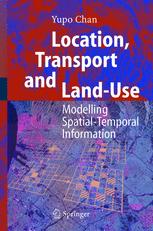

Most ebook files are in PDF format, so you can easily read them using various software such as Foxit Reader or directly on the Google Chrome browser.
Some ebook files are released by publishers in other formats such as .awz, .mobi, .epub, .fb2, etc. You may need to install specific software to read these formats on mobile/PC, such as Calibre.
Please read the tutorial at this link: https://ebookbell.com/faq
We offer FREE conversion to the popular formats you request; however, this may take some time. Therefore, right after payment, please email us, and we will try to provide the service as quickly as possible.
For some exceptional file formats or broken links (if any), please refrain from opening any disputes. Instead, email us first, and we will try to assist within a maximum of 6 hours.
EbookBell Team

0.0
0 reviews1. Theme and focus Few books are available to integrate the models for facilities siting, transportation, and land-use. Employing state-of-the-art quantitative-models and case-studies, this book would guide the siting of such facilities as transportation terminals, warehouses, nuclear power plants, military bases, landfills, emergency shelters, state parks, and industrial plants. The book also shows the use of statistical tools for forecasting and analyzing implications of land-use decisions. The idea is that la- use on a map is necessarily a consequence of individual, and often conflicting, siting decisions over time. Since facilities often develop to form a community, these decisions are interrelated spatially—i. e. , they need to be accessible to one another via the transportation system. It is our thesis that a common methodological procedure exists to analyze all these spatial-temporal constructs. While there are several monographs and texts on subjects related to this book's, this volume is unique in that it integrates existing practical and theoretical works on facility-location, transportation, and land-use. Instead of dealing with individual facility-location, transportation, or the resulting land-use pattern individually, it provides the underlying principles that are behind these types of models. Particularly of interest is the emphasis on counter-intuitive decisions that often escape our minds unless deliberate steps of analysis are taken. Oriented toward the fundamental principles of infrastructure management, the book transcends the traditional engineering and planning disciplines, where the main concerns are often exclusively either physical design, fiscal, socioeconomic or political considerations.